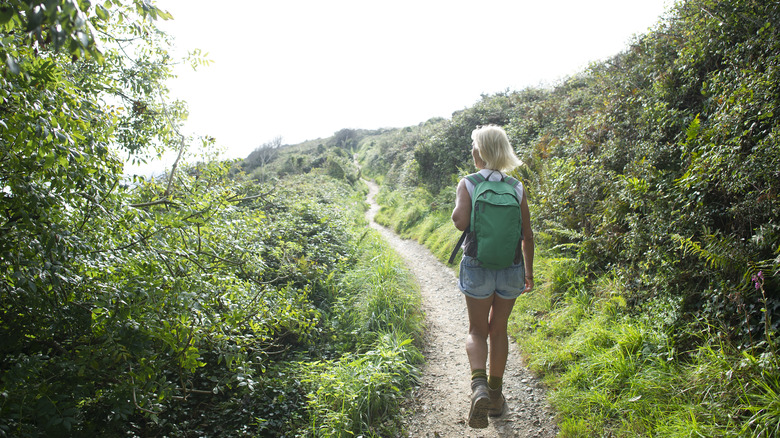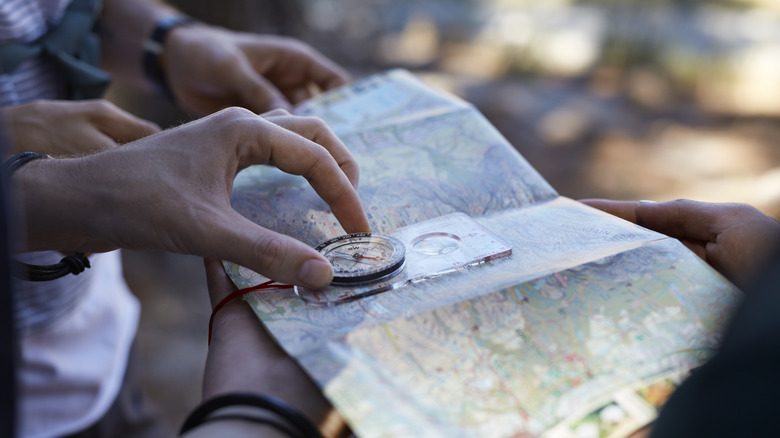How To Plan Out Your Hiking Route And Why It's Important
Planning your hiking route is the foundation of a successful adventure. Whether you're backpacking solo for the first time or are a seasoned mountaineer, it's crucial to know what to expect on the trail. Being prepared can make all the difference between a fun, safe hike and a stressful, risky one. Without adequate planning, even a relatively "easy" trail can turn into a test of endurance and safety. Let's dive into how to properly plan a hiking route and why it's so important.
Planning a hike begins well before you set foot on the trail — it starts with evaluating your own fitness level and hiking experience. Are you comfortable handling steep ascents or navigating rocky, uneven terrain? Do you have the stamina for a long, multi-day hike? If you've only hiked shorter, flatter trails before, suddenly tackling a long route might leave you exhausted before reaching the summit. Selecting a trail that matches your abilities prevents exhaustion, injury, and sets you up for a positive experience that can encourage future hikes.
For experienced hikers, a common pitfall is overestimating their abilities after taking a break from hiking for several months. When returning to the trails after a long hiatus, it's important to recognize that your fitness level may have changed. If you haven't been on a hike in months — or longer — it's best not to use your last challenging climb as a reference point. Easing back into hiking with a less strenuous route will help avoid unnecessary strain.
Factors that impact your hike
Once you know your limits, it's time to research potential trails. Which areas do you want to explore? Do you want a forested path with views from a summit, or do you prefer views along the entire way? Do you want to go on a short backpacking trip or are you excited about the possibility of a long thru-hike?
Look for detailed and reliable trail descriptions online or in guidebooks. Pay attention to key details like the trail distance, and make sure you're looking at the round trip length, not just the one-way distance as this will affect how long you spend on the hike. Another consideration is the terrain type — is the trail rocky, muddy, or packed dirt? Some terrain is more difficult to traverse and could impact how quickly or comfortably you can complete the hike. Last, check the elevation since even shorter trails with steep ascents will require more physical effort.
After narrowing down your trail options, consider what conditions you'll face when hiking. For example, what will the weather be like around the time of year you plan to hike that trail? Weather conditions greatly impact your hike, especially in areas with rapidly changing climates like mountains. Weather can also impact the terrain itself. For example, rain can turn packed dirt into slippery mud, and wet rocks can become treacherous, completely altering the difficulty and safety of your hike. Being aware of these factors will help you prepare effectively for an enjoyable adventure.
Don't change too many variables at once
Hikers, like any other athlete, naturally seek to progress in their skills and experiences. This means they often seek more and more challenging routes and novel adventures. This desire for growth encourages us to venture into unfamiliar territory. As we plan progressively more dangerous hikes, a general rule of thumb I like to follow is avoid changing more than one variable at a time. For example, if you're aiming for a more challenging route, consider bringing a friend who has experience with that type of terrain. Two heads are better than one, especially when facing potential obstacles.
If hiking with someone isn't feasible, consider the popularity of the trail. While many hikers seek solitary experiences in the wilderness, tackling a busier trail — or a trail during a busier time — can alleviate some stress, as there's comfort in knowing others are around. A more populated path can offer reassurance and make it easier to ask for help if needed.
If you're determined to have an off-the-beaten-path experience through the backcountry, familiarize yourself with navigation skills beforehand. These trails have fewer signs and less defined paths, making navigation more difficult. Without clear markers, it's easy to lose your way and become disoriented. If it's possible, make detailed notes of others' experiences on the trail. Pack a GPS, compass, and map, and make sure you know how to use them to guide you through your adventure.


